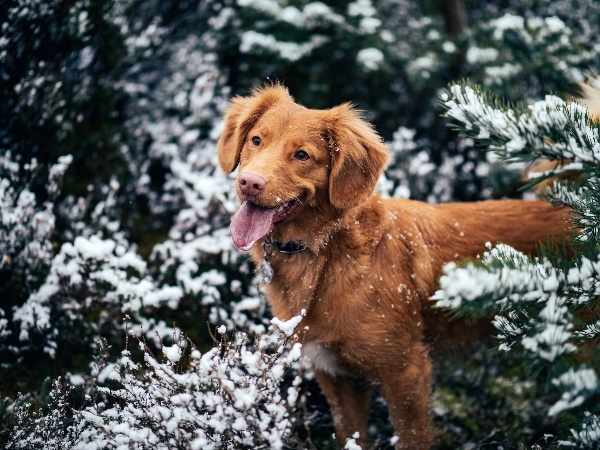 |
| Source: medvetforpets.com |
Summer Weather Concerns
Safe summer temperatures vary depending on humidity levels. For instance, a dog left outdoors in an arid climate may be fine in temperatures of 85 degrees, provided he has access to shade and water. However, a dog in a high-humidity climate at the same temperature might be in danger for heatstroke.
Allow your dog to play outdoors as long as you can join him comfortably. Make sure he has plenty of cold, fresh water and access to shade. On extreme heat days, walk your dog in the early morning or late evening, when temperatures cool off. Place your hand on the sidewalk first to ensure that it’s not hot enough to burn the sensitive pads on your dog’s feet.
Never leave your dog in the car during warm weather. The Humane Society notes that on an 85-degree day, a car with its windows partially rolled down reaches 102 degrees in only 10 minutes.
Breed-Specific Temperature Concerns
While most dogs will be comfortable in the same temperatures as their humans, some breeds are more susceptible than others.
Dogs with short snouts, such as pugs, are more at risk for heatstroke than others because the hot air enters their lungs more quickly than dogs with longer snouts. Dogs with thick coats, such as huskies, overheat more easily than those with short coats, especially if they haven’t acclimated to a warm climate.
Small dogs with short coats, such as Chihuahuas, get cold faster than other breeds. Provide your dog with a sweater during winter walks and keep his outdoor time short. Other breeds, such as poodles, are susceptible to cold if their coats are groomed short.
Danger Signs
Keep a close eye on your dog during very hot or very cold weather. Seek veterinary treatment if his symptoms indicate a weather-related condition.
In cold weather, watch for symptoms of hypothermia:
- Shivering
- Slow breathing
- Lethargy
- Fixed pupils
- Muscle stiffness
- Coma
Hypothermia can cause death. If you suspect your dog is suffering from this condition, move him out of the cold and seek immediate veterinary attention.
In hot weather, watch for symptoms of dehydration and heatstroke:
- Panting
- Drooling
- Rapid heart rate
- Vomiting blood
- Disorientation
- Muscle tremors
- Unconsciousness
If you suspect your dog is suffering from heatstroke, spray him with water or cover him in water-soaked towels to cool him off. Provide him cool water and encourage, but don’t force him, to drink. Move him indoors or to a shady area. Seek veterinary care.
Want to learn more about your pup? Check out Can Weather Affect a Dog’s Behavior?, Getting Your Dog to Wear a Coat or Sweater, and Do Outdoor Dogs Need More Food In Cold Weather? at Cuteness.com!
This article is provided by Cuteness—the go-to destination for passionate pet parents. Cuteness has answers to all of your health, training, and behavior questions – as well as the cutest, funniest, and most inspiring pet stories from all over the world.
Source: medvetforpets.com



No comments:
Post a Comment